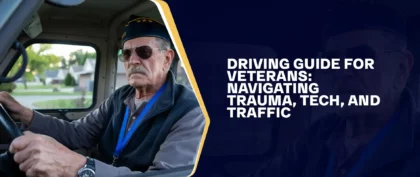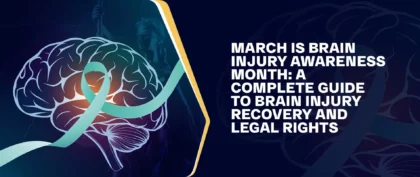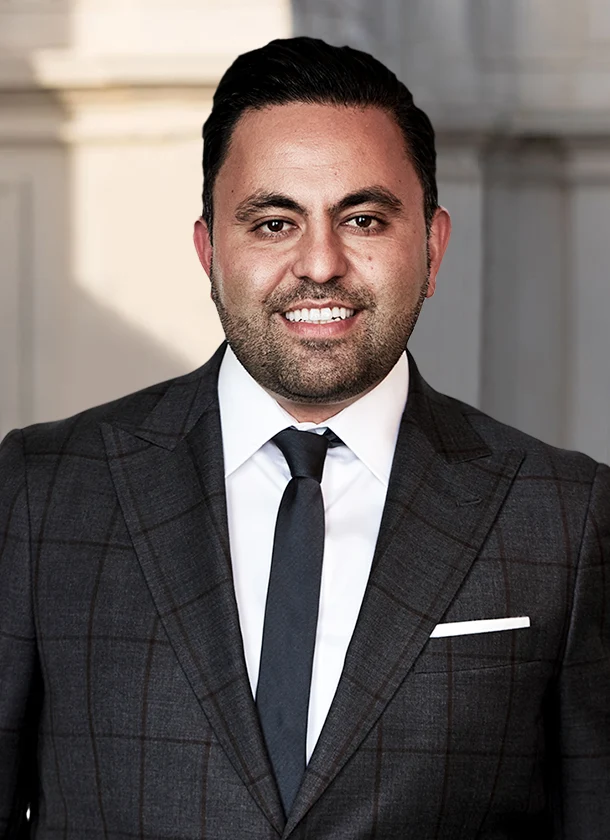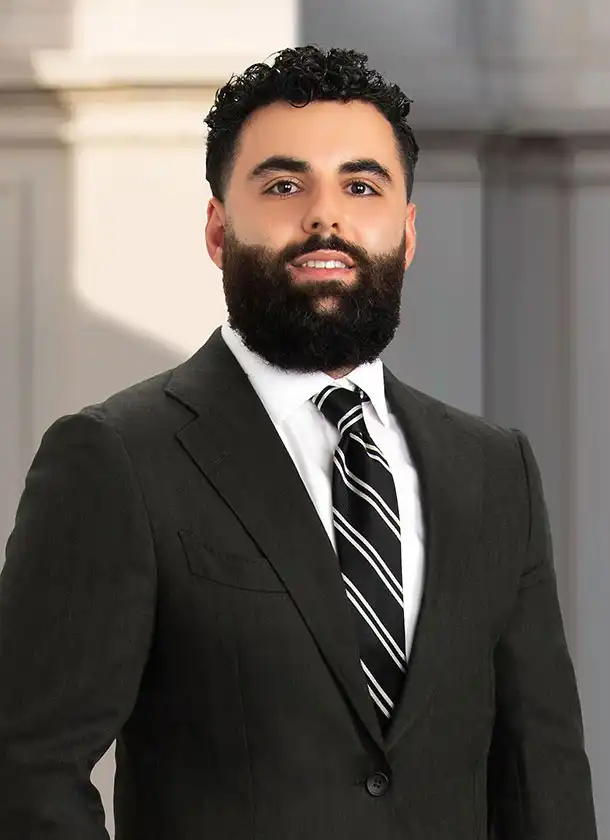Table of Contents
How Much Compensation Can I Get for Pain and Suffering?
When you talk about personal injury claims, one of the most common phrases to get mentioned is “pain and suffering.” It is a confusing phrase that means different things to different people.
Unfortunately, these differences and misunderstandings can dramatically affect your right to be compensated for your injuries. “Pain and suffering” is often the largest component of a personal injury settlement or jury award.
The experienced California personal injury lawyers at Arash Law want you to be fully and fairly compensated for all the losses you have suffered due to personal injuries sustained in an accident.
We are skilled in proving pain and suffering to insurance companies and juries. We know how to fight hard for the compensation you deserve. We have helped many personal injury victims protect this right, and we can help you, too.
Here, we will explain the legal standards that define pain and suffering. We will also discuss how it is valued and examine some real-life personal injury cases that have resulted in big awards for pain and suffering. By understanding pain and suffering, you can ensure that you get all the compensation you are legally entitled to as a result of the personal injuries you have suffered.
What is Pain and Suffering?
You are entitled to compensation for all the losses you suffer as a result of a personal injury. These losses include both tangible and intangible losses. The value of these losses is known as your “damages,” and a negligent defendant has a legal obligation to compensate you for your damages. “Pain and suffering” is a generic term that is applied to all intangible losses. This fact is why it is essential to understand the difference between your tangible, economic damages, and your intangible, non-economic damages.
Economic v. Non-Economic Damages
Economic losses are financial losses that can be easily documented and valued. These losses include your medical bills, your lost wages, and your property damage. Receipts show the exact cost of repairing your car or getting the medical treatment you needed in many cases.
Lost wages can be easily documented by getting a statement from your employer showing how many hours of work you missed and your hourly wage. (If you are paid a salary, this can be prorated based upon a forty-hour workweek.)
Sometimes economic damages must be projected for the future. For example: if you will require lifelong medical care due to permanent injuries, this is a loss caused by the defendant that must be compensated. But of course, you do not know precisely how much your medical bills will cost throughout your life.
Instead, your lawyer can hire a life care planner to project what care you will need and the amount it will cost. This expert witness testimony is used as evidence to support your claim. The same method can be used for any decreases in your future earning capacity.
If, for example, you are left unable to work at all due to your injuries, the defendant must compensate you for all the wages you would have earned between the time of the accident and your retirement. Your lawyer can hire an economist to project what these wages would have been (accounting for inflation and any lost employment benefits, such as health care or employer contributions to a retirement plan).
But many of the losses you will suffer due to an accident are not economical. They cannot be neatly calculated with receipts or an economists’ spreadsheets, making them challenging to assign a value. These intangible, non-economic losses are broadly referred to as “pain and suffering.” Here are some examples of the many intangible, non-economic losses you might suffer from an accident:
The Physical Pain of Your Injuries
The clearest example of pain and suffering is obviously, suffering from pain. Your injuries will be painful. Your recovery will likely involve some suffering as you endure medical treatment, rehabilitative services, and other necessary treatment. The more painful your injuries are, the more money it will take to compensate you for your pain.
For example: compare an injury victim with a mild ankle sprain to another victim with a complicated fracture of the ankle. The sprain might resolve on its own with a couple of days of rest. But the complex fracture could require many painful surgeries to correct.
After surgery, there could be months of painful physical therapy or occupational therapy to help the victim comfortably use her ankle again. In this case, their broken ankle caused far more pain than the sprain, and that victim will be entitled to a higher award for pain and suffering.
Mental Pain and Anguish
An accident is a terrifying experience. It is overwhelming when it happens, and after it is over, you are robbed of your sense of security. Accident victims are entitled to compensation for their trauma, stress, anxiety, and mental anguish.
As with physical injuries, the circumstances of an accident can increase your emotional distress. Imagine a pregnant woman who is injured in an accident. She must worry not only for her own life but for that of her unborn child. She might have to be on an uncomfortable fetal monitor for hours while she waits to hear if her baby will be okay. She might have to endure painful tests – and wait days or weeks for the results – before she knows if there will be any lasting damage to her baby. Her mental anguish has been increased, and she is therefore entitled to a higher award for her pain and suffering.
Injuries are not the only way that your mental suffering can be expanded. Some particularly horrible accidents will also create particularly traumatic situations. Imagine a case where a drunk driver hits a family in a car.
Some family members do not survive, and the others are left to watch them die. The trauma of the moment will do irreparable psychological damage to the survivors – in addition to the lifelong burden of now being forced to live without their loved ones. In this case, only a massive award for pain and suffering could begin to account for the psychological damage inflicted by the drunk driver.
Scars and Disfigurement
Many injury victims are left with permanent scars or other disfigurements of their bodies. These can occur during the accident (for example, if the broken glass cuts you) or as a result of the medical treatment you required for your injuries (such as a surgical scar).
In either event, a negligent defendant must compensate you for the burden of being permanently disfigured. The amount of this compensation varies greatly. If, for example, you have a small scar that cannot be easily seen, it might not impact your life very much. But if you are left with a large scar or one that is on your face, this will affect you much more.
You will also be entitled to more compensation if your scarring or disfigurement affects your earning capacity. Imagine that a person was a model, but had a particular niche working as a hand model. If her hands were scarred in an accident – even if the scar was small – it could permanently affect her ability to get work. The more significant impact a scar or disfigurement has on your life, the more compensation you will be entitled to after the accident.
Loss of Enjoyment of Life
After an accident, you will likely experience some loss in the enjoyment of life. In some cases, this is temporary. You might miss an important graduation or wedding while you are in the hospital. You might be temporarily unable to go to the gym or participate in sports. Even if these are temporary losses, you are entitled to compensation for them.
When injuries are permanent, the loss of your enjoyment of life can be far more substantial. Imagine you suffered an arm injury that left you permanently unable to pick up a child. You might never know the feeling of holding your grandchildren. Or suppose you were a pianist (professional or amateur), and a hand injury left you permanently unable to participate in this personal hobby that added so much enjoyment to your life.
Permanent losses such as these are very relatable to jurors. They, too, have families and hobbies, and they understand how painful it would be to lose these things that add so much richness to our lives. Permanent losses such as these support substantial awards for pain and suffering.
Decreased Quality of Life
Similar to the loss of enjoyment of life is a decreased quality of life. Many victims with permanent injuries are left with a quality of life that will never be the same quality before the accident. Imagine an accident victim who is made a person with quadriplegia due to her injuries.
She is immobile and completely dependent on others for her needs. She will be unable to participate in her hobbies or work. She may not even be able to communicate her needs. This dramatic change in her life quality will also support a massive award for pain and suffering.
Of course, not all “quality of life” issues are that dramatic. Consider the example of an injury victim who can go back to work, but only with permanent restrictions. He is unable to perform certain tasks and will never again have his former position with the company. He is deprived of the sense of pride he took in his former role. He will probably miss out on significant opportunities for advancement, simply because the accident has left him unable to do the tasks or manage the job’s schedule. While this employee might have minimal disruptions to his income, there is still a marked decrease in his professional life quality.
The quality of your personal life can also be drastically reduced due to your injuries. If you are unable to play with your children, your relationship with them can suffer. The stress of an accident and subsequent recovery places a strain on many marriages. Some do not survive. These losses are very real decreases in the quality of your personal life, and they, too, are subject to compensation.
Loss of Consortium
“Loss of consortium” is a specific legal claim that addresses how family relationships are affected by injuries. These claims are usually limited to spouses and parent-child relationships. A spouse, parent, or child is entitled to compensation for the loss of love, affection, companionship, and other intangible aspects of these most important relationships that are impaired when one party is injured. (In a spousal loss of consortium claim, the uninjured spouse is also entitled to compensation for the loss of the sexual relationship in the marriage.)
In many personal injury settlements, the insurance company will make a comprehensive offer of compensation for pain and suffering that includes a spouse, parent, or child’s loss of consortium claim. If the case goes to trial, your attorney will likely have your spouse testify about this claim separately, to establish exactly how your injuries have impacted the relationship.
Loss of consortium claims are usually a small portion of a personal injury settlement when the victim survives their injuries. But in a wrongful death case, loss of consortium is the vast majority of compensation. A victim’s pain and suffering claim does not survive his or her death. Instead, surviving family members (or statutory heirs) sue for their pain and suffering through a loss of consortium claim.
In these cases, the loss of consortium is both powerful and significant. A child might be deprived of a parent’s love, affection, advice, guidance, and nurturing through her most formative years. A young bride might be deprived of her new husband when the couple was just starting their lives together. A devastated new mother might bear the unnecessary loss of a child due to medical malpractice.
These losses are consequential, and they change the victims’ lives forever. They support substantial awards because the losses are significant. The genuine emotion moves jurors that these losses create. They understand the devastating losses that are caused by a loved one’s untimely death. Because of this, insurance companies are willing to make large settlement offers to keep these cases out of court.
How Pain and Suffering is Compensated
The insurance companies are not good at valuing pain and suffering. They aren’t good at it because it is a subjective, emotional loss that varies from person to person. It does not lend itself to a straightforward valuation. It does not fit neatly into spreadsheets, formulas, or other mathematical tools that insurance companies use to value their claims.
Unfortunately, insurance companies still try to make pain and suffering fit neatly into a simple mathematical formula. Many car accident settlement offers are reached by taking the medical bills’ value, then using a multiplier (usually between one and three times, depending on the severity of the accident and injuries) to come up with an arbitrary value of pain and suffering. But pain and suffering is far more complicated than that.
How Your Physical Condition Affects the Value of your Pain
Pain and suffering is a subjective measurement that is different for each accident victim. Not only is each victim unique, but their situations and types of suffering are different as well.
This fact makes it challenging to determine the exact “fair” value for pain and suffering for a particular case. Many factors that affect the victim’s pain, such as:
- The severity of the injuries that were sustained
- The victim’s ability to tolerate pain
- Any underlying medical conditions that complicated the recovery, or made it more painful (for example, an injury victim with osteoporosis might have a more prolonged and more painful recovery from a broken bone)
- Pain management available to the victim (if, for example, the victim was unable to take certain painkillers because she was pregnant, she would have to endure more pain without relief)
How Your Medical Treatment Affects The Value of Your Pain and Suffering
The more extensive your injuries, the more treatment you are likely to require. Insurance companies like to estimate your pain and suffering based upon your medical bills. But different types of medical treatment lead to very different levels of pain and suffering.
If, for example, you spend weeks in the hospital, you will have much higher medical bills than if you spend weeks in physical therapy. But both can be very painful.
It is vital to help the insurance company understand exactly how your medical treatments affected you. Missing work due to pain or appointments is a helpful example. Losing sleep or missing family events is also a tangible example of how your suffering has affected your life.
Be sure to document your pain and injuries thoroughly to help your attorney prove the value of your pain and suffering. Photos of your bruises, stitches, cuts, and other marks will help establish the severity of your physical injuries. A journal that documents sleep that you lost, missed work, and social events you were unable to attend will help demonstrate how these injuries have affected your life.
How Liability Affects Your Pain and Suffering Award
The first step in a personal injury claim is determining who was legally at fault for causing the accident. This fault is known as “liability.” The liable party has a legal obligation to compensate victims for their pain and suffering (as well as their economic losses). This obligation is why car insurance companies start a claim by deciding which driver was “at fault.”
In some cases, liability is clear cut. For example, a surgeon who leaves a sponge in the patient or amputates the wrong limb has committed medical malpractice. In a case like this, the insurance company is unlikely to dispute liability.
While it might be evident that a surgeon who cut off the wrong leg has committed malpractice, there is still the question of damages. The insurance company can always dispute the amount of your pain and suffering even if it does not dispute liability.
But the fact that you have such a strong liability case is an incentive for the insurance company to make a fair settlement offer.
After all, their client will look like a careless doctor at the trial. The surgeon will not make a very sympathetic witness. The surgeon’s defense lawyer could admit liability and only go to trial on the issue of damages, but this is still a lousy position to be in for the insurance company.
The defense would essentially tell the jury that yes, this doctor was negligent and did irreparable harm to the victim, but they don’t think they should have to pay very much for that mistake.
In a case like this, the defense attorney will not want to take the case to a jury. The insurance company will be more willing to settle. When the facts are well built around your case, it is easier to get a fair settlement offer for your pain and suffering.
How Politics Can Affect Your Pain and Suffering Award
Politics has affected almost every aspect of our current life in the United States. While Florida’s courtrooms are supposed to be free from bias and partiality, the sad fact is that politics can affect your personal injury settlement.
Consider the recent examples of protesters who have been injured at demonstrations after George Flloyd’s death.
Serious injuries have been caused by tear gas, rubber bullets, bean bags, and other non-lethal weapons that law enforcement has used against protesters. Many of the injured protesters will not be able to sue for their injuries due to the government’s sovereign immunity.
Sovereign immunity is a legal protection that prevents public officials from being liable for damages caused while in the scope and course of their official duties. (The State of Florida has waived sovereign immunity for state agencies, but this statute does not cover local law enforcement agencies.)
But if such a case went to trial, the jury would likely be sharply divided. Instead of focusing on the case’s facts, the jurors would almost certainly divide themselves according to how they felt about the protests. The case would be decided by how jurors felt about George Flloyd’s death, the protests that followed, and how law enforcement agents responded to those protests. The victim’s injuries would be an afterthought to a heated political debate that had nothing to do with the court’s case.
If anyone doubts the severity of injuries inflicted by non-lethal police methods, they need only consider the tragic case of Scott Olsen. USA Today reported that Olsen is an Iraq war veteran who went to an Occupy Oakland protest in October 2011. Oakland police officers in riot gear released bean bags into the crown from a twelve-gauge gun. One struck Olsen in the head with enough force to fracture his skull.
The young man had survived Iraq, but home in Oakland, he was left with a near-fatal brain injury. At age 24, Olsen had to learn to walk again. His case was settled with the City of Oakland for $4.5 million. While his medical expenses were significant, a large portion of that settlement is compensation for the pain and suffering that Olsen will endure for the rest of his life.
Another hot political issue is the coronavirus. Throughout the country, politicians and citizens have sharply debated the best way to handle the pandemic. An issue that has caused much disagreement is whether employers can be liable for requiring employees to return to in-person work.
OSHA has issued worker’s compensation guidelines for federal employees exposed to the coronavirus while on the job, but these only apply to federal employers. Private employers have a wide range of options. Some have chosen to require in-person work without personal protective equipment (PPE) or social distancing guidelines that reduce the spread of COVID-19.
If an employee attempted to file a personal injury lawsuit against such an employer for contracting the coronavirus on the job, the case would almost certainly devolve into a political discussion of the proper response to the coronavirus. The jury would quickly fall along the lines of those who want to get back to work versus those who don’t. Again the jury would decide the case based upon their political convictions rather than the facts of the case or the employee’s medical condition.
At Arash Law, we believe that everyone is entitled to their own political opinions. We also believe that injury victims have the legal right to be compensated for their injuries. The law does not consider political opinions, partiality, bias, prejudice, or other factors. We believe that victims should be given a fair trial that focuses on the legal standard at issue.
Unfortunately, the reality is that politics do play a role in personal injury settlements, and victims should be prepared for this. It can dramatically affect your right to be compensated for your pain and suffering.
How the Defendant Can Affect Your Pain and Suffering Award
A pain and suffering settlement offer is made to avoid taking the case to trial. If an insurance company or defense attorney knows that their client will not be sympathetic to the jury, it is possible to get a higher settlement offer in order to avoid putting the defendant on the stand. Here are some common examples of defendants that juries do not have a lot of sympathy for:
A Large Company
Large companies do not often win a lot of sympathy from jurors – especially when there is evidence that the company engaged in fraud, had repeated offenses, or attempted to cover up their negligence.
This fact is why some of the largest personal injury settlements in recent news have been against large corporations. You might have heard of the significant case involving the weed killer Roundup.
When a school groundskeeper developed cancer after using the product at work, he sued the company that makes the popular lawn product.
A jury agreed that the cancer was caused by Roundup and awarded the victim $289 million. $33 million was allotted for his future pain and suffering. Courthouse News reports that the case is still on appeal.
The jury’s verdict sent a stunning message to manufacturers of consumer goods. It also made a clear statement about the value of pain and suffering. The Roundup case is not the only example of a lawsuit where a major corporation was hit with a significant jury verdict.
According to U.S. News and World Report, Johnson and Johnson was forced to pay a $4.69 billion jury verdict after a trial involving its baby powder.
Twenty-two women and their families had sued Johnson and Johnson after developing ovarian cancer due to using Johnson and Johnson’s baby powder. The jury awarded the women a staggering $4.69 billion in damages. Some of the women’s claims were dismissed on appeal, and the overall award was reduced by more than half to $2.12 billion.
But this decision did not change the critical – and disturbing – facts of the case. The Appeals Court ruled that the plaintiffs had proven that Johnson and Johnson knew the baby powder contained asbestos and had “worked tirelessly” to ensure that testing protocols would not detect asbestos in all talc samples.
It even published articles downplaying the safety hazards of talc. The Appeals Court found there was “significant reprehensibility” in Johnson and Johnson’s conduct. As you can imagine, jurors would not be pleased to hear such facts about the products they used themselves. The jury’s astonishing verdict (which works out to over $213 million per plaintiff) shows just how unsympathetic a defendant Johnson and Johnson turned out to be.
Rideshare companies (like Uber and Lyft) have also learned the hard way just how unsympathetic they can be to jurors. The Verge wrote a story on a $10 million lawsuit that has been filed by a victim who was raped by her Uber driver. As vile as this fact is, what is even worse is Uber’s handling of it and related cases.
An Indian woman sued Uber’s top executives in 2017 for mishandling her medical records. It came to light that an Uber driver in India had raped her, and in an effort to discredit her, the top executives at Uber obtained her medical records (presumably in an illegal manner) to discredit her as a witness. The lawsuit named former Uber CEO Travis Kalanick, who was eventually ousted from his position in the wake of reports of a toxic workplace environment for women at the company.
None of these facts bode well for a company with 103 instances of drivers sexually assaulting or abusing customers in four years. Imagine being a woman on a future jury. A rape victim sues Uber for personal injuries sustained due to her assault. The evidence of Uber’s heartless response to former rape victims is presented as evidence.
Would you be inclined to side with Uber on any issue? Almost no potential jurors would side with Uber in such a case. Uber’s lawyers know this. They are willing to make higher settlement offers to avoid such a public relations fiasco
A Person in a Position of Trust
Another type of unsympathetic defendant is a person in a position of trust. The public trusts that children will be safe around their teachers, doctors, coaches, and scout leaders.
When a predator breaches this trust, prosecutors tend to handle the criminal case more aggressively. Criminal juries have much less sympathy for defendants who are accused of abusing their position of trust.
And civil juries have little sympathy for the universities, employers, sports agencies, and scouting programs that allow these predators access to vulnerable children.
These companies are willing to make large settlement offers that fairly compensate victims for their extensive pain and suffering to avoid the time and money associated with a trial that is not likely to go in their favor and will undoubtedly cause extensive damage to the company’s reputation.
Tragically, there are far too many examples of this recent phenomenon—one of the most publicized cases involved former doctor Larry Nassar. Nassar was a team doctor who had been employed by USA Gymnastics and Michigan State University.
For two decades, Nassar sexually abused hundreds of children. USA Gymnastics tried to quickly break ties with Nassar when the first public allegations of sexual misconduct were made in 2015.
But the damage had long been done: gymnasts reported that a toxic and abusive environment in training camps left them socially isolated, and particularly vulnerable to Nassar’s abuse. There were no other adults to whom it was safe to report sexual abuse.
Nassar was eventually charged with dozens of sexual abuse counts, sexual assault, and possession of a massive amount of child pornography. He received lengthy sentences in both state and federal court that will run consecutively – meaning Nassar is assured of dying in prison.
But this is little comfort to more than 150 underage victims whose sense of trust in adults was permanently shattered at a devastatingly young age. USA Gymnastics quickly filed for bankruptcy in the face of a vast number of massive personal injury claims related to Nassar’s abuse. CNN reported that the organization recently extended a group settlement offer of $215 million. The bankruptcy court would administer this settlement as a part of the organization’s attempt to exit bankruptcy status successfully.
But victims are not much interested in the financial health of an organization that so seriously endangered their physical and mental health. One lawyer suggested there was a better chance of “Donald Trump endorsing Bernie Sanders” than there was of the victims accepting the settlement proposal. One victim sharply criticized the proposal for its lack of safety measures. Regardless of the money, this brave woman was unwilling to support any settlement that did not involve protections for future young gymnasts
Such courage would be damning to USA Gymnastics at a trial. Jurors would be told of the horrific abuse these women suffered when they were mere children. They would then hear of the toxic environment USA Gymnastics created that kept these terrified children from reporting heinous crimes.
Finally, they would hear these courageous survivors say that USA Gymnastics wouldn’t so much as agree to a basic safety plan to prevent the same horrible crimes from happening in the future. It is difficult to imagine a courtroom anywhere in the United States where USA Gymnastics could win that trial.
It is heartbreaking to realize that Larry Nassar is not an anomaly. Other predators have used sporting organizations to access vulnerable children. The organizations have turned a blind eye in the name of massive profits. Jerry Sandusky was another sexual predator who preyed on children under his care.
For decades, Sandusky worked as an assistant coach at Pennsylvania State University. He was a defensive coordinator for the illustrious Penn State football team, but he also founded a children’s charity in 1977. The charity ran football camps and other summer programs for children.
It was not until 2008 that allegations of sexual abuse came to light. It was revealed that Sandusky had spent thirty years using his charity to find potential victims. Sandusky was initially charged with 52 counts of sexual misconduct with children. Forty-eight of these charges went to trial, and the jury convicted him of 45 of the crimes. He was sentenced to the state minimum of sixty years in prison. He will not be eligible for parole until he is 98 years old, which almost guarantees that he will die in prison.
Like Nassar, Sandusky had been protected by powerful organizations with a storied image and a healthy bottom line to protect. The renowned Penn State football team was suddenly tarnished. The university faced an influx of potential personal injury claims from Sandusky’s victims. His charity was left in tatters, and the university faced financial ruin.
Yet there was little sympathy for these organizations in light of the heinous crime they had allowed to occur. Imagine if you were a juror on a case for personal injuries stemming from Sandusky’s predatory abuse, which was proven to be covered up. Would you have sympathy for the university? Would you side with the victim? What amount of money would fairly compensate the victim for years of abuse suffered at the hands of a sexual predator – abuse which was then intentionally covered up by powerful men at the top of powerful organizations? This is a case that Penn State would be almost guaranteed to lose.
Other influential organizations are also facing major personal injury claims after covering up the sexual abuse and assault of children. The Boy Scouts of America have faced declining membership. Many survivors come forward to detail sexual abuse that occurred for decades within the program.
As more and more survivors came forward, the BSA filed for bankruptcy to protect its dwindling assets from the massive wave of personal injury claims filed against it. Sarasota Injury Law News reported that the bankruptcy court has set a filing deadline of November 16, 2020, for all sexual abuse survivors to file their claims. Survivors who file after this time will not have access to assets that have already been distributed by the bankruptcy court.
These procedural questions demonstrate the broader issue of pain and suffering in this case. Hundreds of victims are coming forward with tales of horrific abuse. Their suffering has been devastating, and many will never recover some semblance of normal adulthood. The pain and suffering of hundreds (if not thousands) of children are so substantial that even a large organization’s assets will not be sufficient to compensate them.
The BSA is a vast, national organization that has maintained significant assets for over a hundred years. There are so many victims. Their suffering is so great that even this powerful organization cannot provide the funds it will take to compensate them for their losses fully. Juries are not likely to have much sympathy for a large, powerful, and wealthy organization that allowed widespread sexual abuse to occur within its ranks.
Of course, not all persons in a position of trust are predatory child abusers. Some are just plain negligent. Consider the example of a young high school student who was horrifically burned when his teacher demonstrated an experiment in his chemistry class. The teacher poured methanol – a highly flammable liquid – from a gallon jug.
The experiment produced a large ball of fire, which caused the boy to be covered with millions of flammable droplets before his body was engulfed in flames. All On Georgia reports that he continued to suffer the excruciating pain of being burned alive until a teacher from another classroom came in with a fire blanket. He survived the accident, but at just sixteen years old, he was left with substantial scarring all over his body and permanent injuries that will alter his life.
Like any employer, the school district is liable for the negligence of its employees. In this case, the teacher failed to provide her students with any safety equipment or safety instructions. The classroom did not have any fire equipment such as showers, ventilation, or a fire blanket. And instead of using a small amount of a dangerous chemical, the teacher poured it freely from a massive gallon jug.
In these circumstances, it is difficult to find much sympathy for the teacher or school district entrusted with the care of this child. Indeed, the jury awarded the student $59 million (mainly for his pain and suffering). Upholding the verdict on appeal, the judge noted that the student had endured more than one hundred painful surgical procedures thus far.
While his pain had decreased since his initial medical treatment, he was sure to experience pain for the rest of his life and suffer from most of his body’s permanent disfigurement. He would also suffer from medical complications as he aged. These facts were sufficient to both convince the jury and support its award on appeal.
The State
In general, the state and government agencies do not tend to be very sympathetic defendants. Some jurors believe that lawsuits against the government will raise taxes, and vote for low verdicts on principal.
Others feel less sympathy toward the government than toward private citizens.
In either case, the government itself is not a defendant that people can relate to very well. When the facts of a case are especially gruesome, it is even more difficult for the state to make a compelling case against an enormous pain and suffering award.
This lesson was made painfully clear in a recent jury trial out of Washington. The case involved a suspicious disappearance followed by a grisly murder-suicide.
In 2009, a young wife named Susan Cox Powell went missing in Utah. Her husband, Joshua Powell, was quickly identified as the prime suspect and gave police highly suspicious answers.
As they worked to get enough evidence to file murder charges against him, Joshua moved his two young sons into his father’s house in Pallayup, Washington. Authorities were able to get a search warrant for the father’s house.
After investigators found thousands of images of child porn and voyeuristic photos taken of women and children without their consent, the father was arrested and eventually sentenced to prison. The boys, meanwhile, were taken from their father’s custody.
Though Joshua was still a person of interest in his wife’s murder and his father’s child pornography cases, the court allowed him supervised visits with his sons, accompanied by a state social worker.
On February 5, 2012, social worker Elizabeth Hall drove the boys to Joshua’s house for a supervised visit. Joshua quickly locked the boys in the house. He refused to allow Hall inside (as was required by the court order for supervised visitation). She called 911.
Before authorities could arrive, the house exploded, killing Joshua and his two young sons. Investigators later determined that Joshua had taken a hatchet to his sons before blowing up the house in a deliberate attempt to kill all three of them.
In the aftermath of this horrible family tragedy, Susan’s parents filed a wrongful death lawsuit against the State of Washington. The lawsuit alleged that the state had failed to protect the reportsboys. Specifically, it was accused of prioritizing Joshua’s parental rights over the safety of the children. The jury agreed with this assessment and made an unequivocal statement about the state’s actions. The News Tribune reports that the Cox family was awarded $98 million for young Charlie and Braden’s pain and suffering. The boys were only five and seven years old at the time their father murdered them.
It is easy to get lost in the grisly facts of this horrific case. Joshua Powell was a mentally ill man, and it has been proven that he killed his sons and himself. But he was not the only one who was responsible for his sons’ pain and suffering. The State of Washington chose to remove the children from his custody when child pornography was found in his father’s house. The children were thus legally in the state’s custody at the time of their death. (In fact, Joshua Powell had no legal right to care for his children at that point.)
The state chose to allow supervised visitation with a man under investigation for murder and child pornography possession. And when this visitation occurred, the only state official there to protect the children was a social worker with no law enforcement training. These facts do not make the state a very sympathetic defendant. Indeed, the jury found that the state was responsible for the unimaginable pain and suffering of two small children.
Anyone Who is Grossly Negligent
In some cases, it is the defendant’s actions that make him or her unsympathetic to the jury. The worse the negligence, the less sympathy jurors will have for the mistake.
Take the case of the Kentucky woman who had a sponge left inside her body after surgery. The sponge was massive – approximately 18 inches by 18 inches. The Insurance Journal reported that it was not discovered for years.
By the time it was, it had been eroded into the woman’s intestines, causing digestive problems.
Even once it was found on a CT scan four years after the surgery, the poor patient did not learn about it for almost two more years due to communications errors with the medical staff. Her leg eventually had to be amputated.
A jury awarded the patient $10.5 million. Of this, $8 million was earmarked for pain and suffering. The hospital plans to appeal this award. It claims that the patient lost her leg due to a history of diabetes, smoking, and other “lifestyle choices.”
But these arguments were unpersuasive at trial. The hospital staff was grossly negligent in leaving such a large sponge inside the woman after surgery. These actions left the jury with very little sympathy for the hospital.
Not only was the hospital slapped with a significant jury verdict, but nearly 80 percent of that verdict was specifically allotted to the victim’s pain and suffering. This case shows just how much a pain and suffering award is affected when the defendant is grossly negligent.
How the Plaintiff Can Affect Their Pain and Suffering Award
If the insurance company does not make a fair settlement offer, the case can be taken to trial to let a jury determine the value of the claim. But going to trial always carries certain risks. It is not only the jury’s sympathy for the defendant that affects the outcome of a case – but the jury must also find the plaintiff to be credible and sympathetic. A personal injury attorney must determine whether an injury victim will make a good witness who will be persuasive to the jury. The attorney must honestly consider:
- Is the victim a likable, credible, good, or bad witness?
- Is the victim’s testimony regarding personal injuries consistent throughout the testimony?
- Does the victim appear to be exaggerating claims of pain and suffering?
- Do medical experts agree and support the victim’s claim of pain and suffering?
- Does the jury believe the victim lied about anything (even something unrelated to pain and suffering)?
- Do the pain and suffering claims seem reasonable?
- Does the victim have a criminal record?
All of these factors can influence a jury’s perception of an injury victim. If the jury finds the victim unlikeable or unbelievable – even on an issue unrelated to the case – it is less likely that it will award that victim a fair amount for pain and suffering. While economic damages (like medical bills and lost wages) are determined by objective evidence such as receipts, pain and suffering is determined mainly by the victim’s personal experience. This fact means the jury must relate to the victim.
Limits on Pain and Suffering in Medical Malpractice Cases
Like many other states, California has enacted a cap on pain and suffering awards in medical malpractice lawsuits. The current limit of $250,000 was established in 1975 by the Medical Injury Compensation Reform Act. For many medical malpractice injury victims, this is simply nowhere near enough to compensate them for their pain and suffering.
First, $250,000 was a lot more in 1975 than it is today. The Insurance Journal reports that $250,000 is worth about 20% of what it was in 1975. It is the equivalent of only $50,768 in 1975. Pain and suffering may be similar, but the market rate of that pain and suffering changes, just like everything else. Imagine if you could only be compensated for the amount your medical bills would have cost in 1975 – not what they cost you today. This rule would be unfair. Plaintiffs would likely not be the only ones upset by this.
Unfortunately, pain and suffering is a far more controversial area of compensation. Insurance companies and financially conservative individuals often feel that pain and suffering should be limited because it is not tangible and has little or no value. This line of thought is not a fair perception. Worse still, the Insurance Journal reports that the unfair cap has a disproportionate effect on people of color in California.
The second reason these caps are so unfair is the amount of pain and suffering caused by medical malpractice. Imagine a surgical error that results in the wrong limb being amputated. The victim – who is now forced to be a double amputee for the rest of his or her life – will not collect more than $250,000 for the massive amounts of pain and suffering that will continue for the rest of his or her life.
This suffering includes “phantom limb” pain, decreased mobility, severe limits on daily activities, and other painful losses that could continue for decades. Or consider the even worse example of a patient who is killed due to a doctor’s negligence. Her young children will be limited to a total of $250,000 in non-economic damages.
This compensation must cover a lifetime of being left without a mother’s affection and guidance. Her surviving spouse might be devastated by the untimely death of his young bride. He will suffer years of anguish over the life they were supposed to have together, the emotional stress of explaining the death to their young children, and the ongoing exhaustion of trying to figure out how to raise their young children on his own.
But he, too, is limited to $250,000 for these intangible losses. (All victims, including his children, must share this total.)
This law is frustrating, unfair, and can make a terrible situation even worse for medical malpractice victims. The only good news is that there have been efforts to reform this law, and the voters will have another chance to change it in November 2022. The Insurance Journal reports that activists have collected the 900,000 signatures required to put the measure on the ballot.
If passed, the new law would allow judges and juries to decide that pain and suffering is worth more than $250,000 in cases of catastrophic injury or death. The law would also require jurors to be informed about the existence of the cap. This action is another critical measure to ensure fairness in the jury process.
Currently, jurors may not be aware of the cap. This fact means that a jury could decide a victim’s pain and suffering is worth millions of dollars, and have no idea that the award will be reduced to a fraction of that value due to an outdated and unfair law. Jurors who are informed of the cap will be able to use this knowledge to have more fair deliberations about what it will take to compensate a victim of medical malpractice for the very real pain and suffering that must be endured for the rest of his or her life.
Real-Life Pain and Suffering Awards
To get a better idea of the actual amount of compensation victims get for their pain and suffering, let’s look at some real-life cases. Here are some real awards that Arash Law has obtained for actual clients:
Car Accident
Our client was rear-ended while waiting at a stoplight. After suffering lower back pain for months, doctors discovered an injury of the spinal discs. This painful injury caused our client extensive suffering. Our car accident lawyers were able to recover $775,000 for our injured client.
Worker’s compensation
Our client was injured on the job and hired a worker’s compensation attorney at another firm. This case was referred to us only two months before the statute of limitations expired.
Initially, it looked like our client only had access to worker’s compensation coverage. This lack of coverage would have been devastating for the victim: worker’s compensation offers absolutely no coverage for pain and suffering.
Our attorneys worked hard and dove deep into the case. We were about to find a third party who was liable for our client’s injuries. We were also able to settle the personal injury claim for the defendant’s insurance policy’s maximum limits: $1 million.
Despite the initial assessment that he could not be compensated for intangible losses through workers’ compensation, our client ended up with substantial compensation for his pain and suffering.
Personal Injury
Our client had hired a large, well-known law firm to handle a serious personal injury case. This firm dropped his case four months before trial. Without an experienced injury lawyer, the insurance company could have pressured our client to accept a low settlement offer or even convince the victim to drop the case altogether. We came in to prepare for trial at the last minute.
When the insurance company saw that our client still had lawyers willing to take the case to trial, it settled for the defendant’s full policy limits of $1 million. Once again, our hard work ensured that our client was fairly compensated for substantial pain and suffering.
Motorcycle Accident
Our client was injured in a traffic accident after being hit by a truck while riding a motorcycle. The initial police report stated that our client was at fault, which meant no compensation whatsoever. (Not for economic damages, like lost wages and medical bills, nor non-economic damages like pain and suffering.)
Our diligent motorcycle injury lawyers took the case and began investigating. We worked hard to prove that it was the truck driver who was at fault for causing the accident. The insurance company ended up paying the policy limits of $1 million to compensate our client. If the victim had allowed the truck driver’s insurance company to deny liability based on the erroneous police report, the compensation would have been nothing.
Car Accident
This was a painful accident that occurred on the busy I-10. Our client had pulled over and engaged his hazard lights, doing everything necessary to stay safe while out of traffic. He could see a tow truck in the rearview mirror. The tow truck was swerving all over the road, and it inevitably hit our client’s car. He had little chance to avoid the accident while stopped.
The collision was powerful enough to cause the tow truck to flip. This severe accident also caused our client to suffer serious injuries. We were able to get $1 million in compensation – including a significant award for his pain and suffering.
Car Accident
Our client was struck by another vehicle while making a left turn. Her son and daughter were in the car, and they suffered severe injuries due to the accident. The insurance company might have tried to deny liability or make a lowball offer based on the fact that our client did not have a driver’s license at the time of the accident, but our lawyers stopped that.
We found eyewitnesses who were able to confirm our client’s statements. We proved that the other driver caused our client’s injuries and that the status of her driver’s license had nothing to do with whose negligence caused the accident. We were able to secure a $1 million settlement to compensate the family for their collective pain and suffering (which was substantial) and their other losses.
Rideshare Accident
Our client called a ride through a popular ride-sharing app. While in the vehicle, it was involved in a low-speed collision, and our client was injured. She had a rare medical condition which made her injuries more difficult to value. Despite the accident being a minor one, the insurance companies fought the case for more than two years.
Our experienced ride-share accident lawyers had to do extensive research to present both the legal and medical issues in court. Their hard work paid off – in the end, the insurance companies agreed to pay our client $1.1 million. This unique case shows how unique pain and suffering can be for different injury victims. While another victim’s injuries might not have been as painful in this minor accident, our client had extensive pain and suffering. This fact means the defendant was still obligated to compensate her at a higher rate.
Rideshare Accident
Another client was injured in a rideshare vehicle. Rideshare companies maintain extensive insurance policies, so compensation is available to victims who can prove their pain and suffering. Our client was living in Colorado throughout this case, which created some challenges in investigating our case and gathering the evidence.
Despite this, we proved extensive pain and suffering. Our elite injury lawyers were able to secure a $1.125 million award for our client.
Truck Accident
Our client was rear-ended on the freeway by a delivery truck. The truck was owned by a well-known delivery company with significant assets and an extensive insurance policy. Our client was a middle-aged woman who suffered painful neck and back injuries. The defense attorneys tried to blame the victim for her injuries. They claimed that her weight and pre-existing medical conditions were the reason her injuries were so painful.
Our truck accident attorneys worked hard to present medical evidence that her injuries were caused by the impact of the delivery truck. We were able to negotiate a large settlement of $1.15 million at a mediation, which means that our client did not even have to go through the ordeal of a trial. We did not let the insurance company blame her to avoid their legal responsibility to offer her fair compensation for her pain and suffering.
Car Accident
In this case, the insurance company admitted fault on behalf of the negligent driver. Unfortunately, this does not mean they made a fair settlement offer to our client. The insurance company refused to accept that our client’s injuries were severe and painful. Instead, they dragged her through two years of litigation and hired their medical experts to contest her injury claim. This action only made their case weaker.
After incurring high costs on expert witness fees and depositions, the insurance company increased its settlement offer three weeks before trial. The initial offer of $150,000 was raised to $1.25 million. Our client’s pain and suffering award was more than the total amount of the first settlement offer. Though it took time, money, and stress to work through litigation, our client’s efforts paid off to get her fair compensation for her significant pain and suffering.
Pedestrian Accident
This was a tragic case involving a small child. The child was severely injured after being struck by a car. The insurance company tried to deny liability, claiming that the child ran out into the street unexpectedly, and their driver was not at fault because the accident was unavoidable. These attempts to pin the blame on a small child did not work out well for the defense.
Our pedestrian accident lawyers worked hard with accident reconstructionists to prove that the accident was avoidable and that their driver was negligent. We obtained the maximum coverage available under the policy: $1.25 million. Though the insurance company tried to avoid paying anything, the child ended up with substantial – and fair – compensation for his significant pain and suffering.
Premises Liability
In this case, our client was working as a painter. As he did the exterior painting on a local nail salon, the defendant knocked over his ladder. Our client was left with a mild traumatic brain injury and an injured shoulder. Because the client was working at the time, he might have been entitled to workers’ compensation coverage. But worker’s compensation offers absolutely no coverage for pain and suffering.
Our job injury lawyers worked hard to find the appropriate defendant and prove premises liability for the dangerous condition. This action ensured that our client had access to fair compensation for his significant pain and suffering. The defense attorneys decided to drag the case out. They wasted a lot of time and money, pushing the case through the litigation process. Ultimately, they decided to settle the case three weeks before trial for $1.25 million.
Car Accident
This case involved a catastrophic head-on collision caused by a driver who fell asleep behind the wheel. This accident caused severe injuries to our client. The defendant’s insurance company was willing to work to settle the case – it would have been hard to deny that their client was negligent for falling asleep behind the wheel.
In less than six months, we settled the case with fair compensation for pain and suffering. Our lawyers worked hard to prove the amount of our client’s losses. Eventually, we were able to get our client the full policy limits of $1.28 million.
Car Accident
This front-end collision caused our client to suffer painful back injuries in his lumbar spine. After a year of physical therapy, chiropractic care, and other painful rehabilitative services, our client had to undergo painful back surgery. The insurance company tried to claim that the accident “wasn’t that serious” and that our client’s injuries could have been “that bad” based on the vehicles’ speed at the time of the impact.
Our head-on collision accident attorneys worked hard to document the injuries. We gathered medical evidence, got testimony from expert witnesses, and built a strong case to support a fair award for our client’s significant pain and suffering. In the end, we were able to obtain an award of $1.3 million for our client.
Car Accident
This collision left our client with profound – and painful – neck and back injuries. At just 34 years old, the client had a lifetime of pain and suffering ahead. The defense dragged the case out without making a fair offer for compensation for our client’s lifelong losses. Their stubbornness caused the case to drag on for two years.
Eventually, we were able to get our client fair compensation for lifelong pain and suffering (in addition to lifelong medical care and other financial losses). This award was $1.4 million.
Motorcycle Accident
Our client was seriously injured while riding her motorcycle on uneven pavement. She fractured her ribs and suffered severe head trauma. We sued the contractor and the city for negligently repairing the road. The defense tried to deny liability and drag the case out. They forced us to file a lawsuit, conduct discovery, hire expert witnesses, and go to trial.
After the first day of trial, the defense finally made a fair settlement offer. Our client was awarded $1.45 million for her losses. This settlement included a significant award specifically for her extensive pain and suffering.
Wrongful Death
This case involved yet another car accident, but this time, it caused the tragic death of a wonderful woman. The victim was a church volunteer whose family was devastated by her untimely death.
Unfortunately, no personal injury lawyer can make up for the loss of a loved one. But we were able to bring her family some sense of peace and justice by securing an award for the full limits of the negligent driver’s auto insurance policy – $1.5 million. We were also able to secure a donation to the victim’s church as part of this settlement. These are some of the small things our lawyers can do to bring a sense of justice to grieving families.
Pedestrian Accident
Our client was injured after being struck by a driver while jaywalking at night. The police report initially cited our client as being at fault for the accident. This report allowed the defendant’s insurance company to deny liability. They refused to make any settlement offer whatsoever.
Despite the negative police report, which made it seem at first like our client might not get any compensation for pain and suffering, we fought hard to win the case. Our wrongful death lawyers dug deep and found the evidence needed to prove that the driver was negligent. We also documented the injuries and found the medical evidence necessary to establish the amount of our client’s pain and suffering. Ultimately we were able to recover an award of $2 million for our injured client.
Car Accident
This was a unique accident in which our client was struck by a police cruiser going 70 miles per hour through a stop sign. Litigation against police departments is known to be tough. Rules of “qualified immunity” can shield government agencies from liability for negligence committed by their employees acting in the course of their employment. This case had many legal challenges and was hindered by small-town politics.
Our car crash attorneys fought hard for our client, however. Eventually, we were able to get a fair settlement offer for our client’s significant pain and suffering. The final award was $2.1 million.
Car Accident
This was another auto accident that resulted in back injuries to our client. A painful surgery to repair the disc also required a painful recovery period. Our client will likely suffer lifelong back pain and further medical complications.
Despite this strong evidence of pain and suffering, the insurance company refused to make a fair settlement offer. They dragged the case out through two mediations and prepared for trial. Finally, right before trial, they eventually made a reasonable settlement offer that our client accepted. We ended up with an award of $2.2 million for our client.
Products Liability
Our client was a repairman who worked on air compressors. While performing service, one machine exploded, and our client suffered severe injuries to his lower body. He had to have multiple surgeries to repair his legs and knees. His employer did not carry workers’ compensation insurance.
Still, even if this coverage were available, it would not offer compensation for his lifelong pain and suffering. Instead, we were able to pursue a claim against the business owner under its general liability insurance policy. Our attorneys worked hard to settle the case for the maximum policy limits of $2.2 million.
Dog Bite
Our client was violently attacked in an unprovoked dog bite incident. While visiting from Canada, the victim was thrown to the ground, sustaining severe brain injuries. The dog was not leashed.
Our lawyers worked hard to prove that the homeowner was negligent so we could access compensation from the owner’s homeowner’s insurance policy. We also worked hard to prove just how extensive our client’s pain and suffering was. In the end, we secured a settlement for the full limits of the homeowner’s insurance policy coverage. This settlement was a $2.3 million award for our client.
Construction Accident
Our client fell in an open elevator shaft at a construction site. He lost consciousness and suffered severe injuries. The defense did accept liability for the accident but disputed the nature of our client’s injuries. The defense maintained that our client’s injuries weren’t as drastic as he said they were.
Before Arash Law became involved, the defense made an offer of judgment at only $125,000. The case was then referred to our firm. Our lawyers dug in and proved that our client was unable to compete in the open labor market. We demonstrated that his earnings were impaired, and he had substantial medical bills.
We also proved that his pain and suffering was considerable in light of the many ways in which his life had permanently changed due to this accident (and thus, the defendant’s negligence). The case was ultimately settled for $2.36 million. This amount is nearly twenty times higher than the defense attorney’s original offer of judgment.
Car Accident
This was a unique case where the defendant’s insurance company accepted liability and agreed to pay out the maximum limits of the defendant’s auto insurance policy coverage. However, this does not mean that the insurance company paid up. The company handled the claim negligently and delayed payment to our client. Separate damages can be available to an injury victim who suffers financial losses due to unreasonable claims handling.
Many victims have medical expenses, rent, and other bills piling up at a time when they are unable to work. The insurance payments they are legally entitled to keep a roof over their head during this very vulnerable time. When insurance companies fail to process claims reasonably, an injury victim can suffer damage to a credit score, have to borrow money, suffer humiliation and loss of reputation – all because an insurance company refused to do its job.
In this case, we eventually recovered $2.5 million for our client. Like defendants, insurance companies must also be held responsible for the damage they do through negligence.
Workers Compensation

Once Arash Law became involved in the case, our client was admitted to a neurological rehabilitation facility and got more comprehensive treatment to ensure he reached the maximum medical improvement he was able to. We obtained a judgment for $3.12 million on behalf of our seriously injured client, who will endure pain and suffering (and other intangible losses) for the rest of his life.
Child on a Bicycle
This was a tragic case in which a young child, only six years old, was struck by a car while riding his bicycle. He sustained a traumatic brain injury and will likely suffer permanent losses for the rest of his life due to the damage to his brain. The defense tried to claim that the child was at fault for riding his bicycle in the street. We did not let them get away with pinning the blame on a small child to save some money.
Our lawyers worked hard in the discovery process and grilled the defendant during depositions. Eventually, we were able to get the driver to admit that he had been distracted at the time of the accident. The defense attorneys knew better than to take the case to trial. No jury would sympathize with a distracted driver who caused permanent brain damage to a small child at the beginning of his life. Instead, we were able to settle the case for $3.5 million.
Car Accident
A negligent driver tried to make a left turn in front of our client during heavy fog. Our client was left with severe orthopedic injuries resulting from his broken bones. These injuries drastically reduced his ability to continue his work in the agricultural industry.
For years, the defense tried to drag the case out and make unfair settlement offers far too low to compensate our client for all his pain and suffering fairly. Our attorneys worked hard and stuck to their guns during settlement negotiations. In the end, we were able to get $4.1 million for our client.
Pedestrian Accident
Our client was on foot, properly crossing the street within a designated crosswalk when he was hit by a large truck. Our client was left with a mild traumatic brain injury that caused permanent brain damage and other losses. The truck company tried to blame our client for his injuries. They said that he was looking at his phone instead of paying attention to the traffic around him.
Our aggressive lawyers were not about to let them get away with this tactic. We fought hard to prove liability. Truck drivers have a duty not to hit pedestrians in the area where they are driving. We refused to let the insurance company say otherwise. Our hard work paid off in the end. Eventually, we secured a $5 million award for our client, which was fair compensation for the lifetime of pain and suffering he will endure.
Car Accident
Like many other car accidents, this one was caused by a distracted driver who was not paying attention to the road. Unfortunately, this case had far more tragic results. Our client was a person with paraplegia after the accident. His medical bills and rehabilitative services will continue for a lifetime. He will also require significant modifications to his home and lifestyle.
This horrible pain and suffering will continue for decades. We were able to secure the full limits of the insurance policy, which was $5.25 million. We were also able to get our client workers’ compensation coverage since he was working at the time of the accident.
If we had only pursued workers’ compensation, our client would have had no compensation for pain and suffering, as this is not covered under workers’ compensation coverage. But our skilled attorneys knew how to handle the workers’ compensation and personal injury cases together to ensure that both cases were handled properly and the litigation went smoothly. Ultimately, we could maximize our client’s compensation by finding all potential defendants and all possible sources of compensation.
Car Accident
This was another car accident with a tragic ending. We represented a young family that was struck by a drunk driver. After crossing the double yellow line, the drunk driver hit the vehicle, killing the mother.
Our clients were devastated by the untimely death of a loving wife and mother. Her husband and son were in the car at the time of the accident. Not only did they suffer the loss of their wife and mother, but they also suffered the trauma of watching her die. This type of case is not one that a defense attorney wants to take to trial.
Despite the horrific facts, the insurance company still dragged the case out. They tried to deny liability. They tried to deny the drunk driver’s coverage. They tried many tactics, but our attorneys worked hard and refused to give in to their strategies.
In the end, we secured the full policy limits of $6 million. This settlement cannot take away the trauma of seeing a loving wife and mother die at the hands of a drunk driver. It is, however, a meaningful statement about the real value of pain and suffering.
Premises Liability
Our client was a factory worker who was injured on the job. An industrial machine caused him severe head injuries, and our client was left with pain and suffering that will likely follow him for the rest of his life. The case was a complicated one involving many defendants with many potential defendants.
A case like this might result in the employer being liable for workers’ compensation coverage, or the factory owner being liable for premises liability, or the machine manufacturer being liable for product liability. With so many moving parts in a case, it can be challenging to keep everyone in line.
Our lawyers had to manage competing insurance company tactics from multiple defendants. We also had to handle different defendants blaming one another for the accident. Like always, we never gave up, and we worked hard to prove our case. We established how the accident occurred and who was legally responsible for causing it. We demonstrated the extent of our clients’ injuries and the pain and suffering he will endure for years to come.
And in the end, we secured the full policy limits of $14 million for our client.
As you can see, Arash Law gets results. We fight hard to prove the fair value of your pain and suffering. Your intangible losses are genuine, and you have the legal right to be fully compensated for them. Here are some other cases from around the country that demonstrate just how costly pain and suffering can be:
The Paralyzed Dancer
In August 2015, Tierney Darden was a young dance student living in Chicago. She was just 19 years old and had a promising future ahead of her.
While waiting for transportation at O’Hare Airport with her sister and mother, a storm rolled through the area and knocked a pedestrian bus shelter loose. The massive object became 750 pounds of shrapnel as it landed on Tierney. She was left paralyzed from her injuries.
While investigating Tierney’s case, her lawyers discovered that the shelter had come loose because it was missing bolts. Other bus shelters at O’Hare were also poorly maintained, with lawyers finding missing bolts, corroded parts, and broken brackets. The City of Chicago has since removed all pedestrian shelters at the airport.
Five months before trial, the City admitted liability and attempted to settle Tierney’s case. But their settlement offers simply did not adequately compensate the young woman for the future stolen from her. Her parents were forced to be full-time caregivers for her. Her career was forcibly ended before it could begin.
And she will be unable to experience the particular life moments that mean so much to women her age: walking across the stage at graduation, walking down the aisle at her wedding, and teaching her children how to walk someday. Perhaps most devastating is the constant pain that she will endure every day of her life. She described it as “torture” at trial.
The Chicago Tribune reported that the City offered to settle the case for $30 million during the trial. This offer was declined, and Tierney’s attorneys pressed on to convince the jury that her devastating losses were worth more. Their efforts paid off when Tierney was awarded $148 million in damages at trial.
Clearly, the jury understood that Tierney’s pain and suffering was worth far more than $30 million. They understood that she would endure severe pain every day for the rest of her life. They understood that her quality of life has drastically decreased. They understand the value of her lost career and the sense of pride and self-worth that come with that. All of these are genuine losses that her attorneys proved to the jury.
After the award, the City agreed to waive its right to appeal the verdict if Tierney would agree to settle the case for $115 million. (Such agreements are common after jury verdicts, as the time and cost of appealing a judgment can be detrimental to both sides.) She has now been awarded $100 million in cash and a $15 million annuity that will issue payments for her living expenses. According to her attorney, these awards will fund Tierney’s “quest to end chronic daily pain.” Her goal is to be able to function more comfortably throughout daily life.
It is worth noting that $115 million is a record for a single personal injury case against the City of Chicago. The City has paid out $115 million on claims related to the conduct of disgraced former Chicago Police Commander Jon Burge, but never so much on a single claim. In 2013 and 2014, the City paid $750 million on all workers’ compensation claims. These facts show the drastic difference in the severity of Tierney’s lawsuit and other personal injury claims. It is also worth noting that the City of Chicago is insured up to $750 million.
The Child Who Died of Skin Cancer After Being Sexually Assaulted and Lit on Fire
This event was an especially gruesome case that occurred in Texas. A young boy, just eight years old, was sexually assaulted by another boy, aged thirteen, in his neighborhood. Two weeks later, that same assailant attacked the boy again.
This time he was tied up to a tree, and gasoline was poured in his face. The older boy then set him on fire. The young victim survived his injuries but at a devastating cost. He endured years of painful skin treatments and burn therapies before developing skin cancer due to his burns. He died at the young age of twenty.
A local personal injury lawyer took the case pro bono. He told the jury that their decision should be a symbolic victory that reflected the heinous nature of the offense. He asked the jury to issue a more sizable judgment than the largest verdict he could find on record (a $149 billion class-action settlement from the tobacco industry that was reported in Florida in 2000).
The jury did precisely that. The LA Times reports that the jury issued a verdict of $150 billion in favor of the surviving parents. This amount is believed to be the largest personal injury settlement ever recorded in America.
As you might imagine, the defendant does not have $150 billion to pay to his victim’s parents. Nor would any insurance policy have such high amounts of coverage. As the lawyer stated, this is a symbolic victory that is meant to make a statement about the value of this poor boy’s pain and suffering. Imagine suffering the horrific sensation of being burned alive after the trauma of a sexual assault, then having to endure painful skin grafts over several years, before developing fatal cancer.
The mind almost cannot comprehend the level of pain and suffering this victim endured. It is also worth noting that the defendant did not appear at the civil trial because he was in prison for yet another crime against a child. In 2001, the defendant was convicted of assaulting another eight-year-old and ended up as a registered sex offender. He was toward the end of a lengthy prison sentence for that offense at the time of the civil trial.
There was also another goal of this symbolic victory. At the time of the assault, the older boy was detained but never charged with a crime. A prosecutor told the LA Times that there were significant challenges in proving the case at the time: there was “scant physical evidence” from the assaults.
Worse still, the victim’s serious injuries left him unable to communicate what had happened or who had assaulted him. The victim’s parents will be unable to recover much (if any) compensation from the assailant. Still, they hoped to put pressure on Montgomery County prosecutors to charge the case.
Luckily, this goal was met and in a big way. The Courier of Montgomery County reported that a capital murder charge was brought against the defendant in 2014. A jury convicted him in 2015, and he exhausted his appeals in 2017 when the Texas Supreme Court refused to take up the case. His forty years prison sentence has been affirmed.
During this trial, it also came to light that the victim only disclosed the rape in the days before he died. This fact is why prosecutors did not know to look for evidence or charge the offense at the time. It was also revealed at trial that the defendant had attempted to destroy evidence of the sexual assault with the fire. The facts of this tragic story only got more and more gruesome as the case was investigated further.
None of the legal maneuverings will help the victim’s parents overcome the devastating losses they have endured. Even if the defendant could pay the judgment, $150 billion might not be enough to compensate for the excruciating pain and suffering the victim suffered for years before his death. But the verdict now stands as one of the largest (if not the largest) personal injury verdict in American history.
In turn, this got a murder conviction that will ensure the defendant remains in prison for decades. This awful case shows how a pain and suffering award can affect other critical legal rights.
The Infamous “Hot Coffee” Case Against McDonald’s
Most of us remember the infamous “hot coffee” case: a woman spilled her coffee in a McDonald’s drive-through and sued the company for her injuries. This case was widely ridiculed and targeted by the media. It drew the fire of pundits, critics of personal injury claims, and even late-night comedians. The fact that the case received such negative attention concealed some critical facts about the case.
Even now, decades later, many people don’t know the true story of the McDonald’s hot coffee case. Stella Leibeck was an older woman whose grandson drove her to a McDonald’s in Albuquerque, New Mexico, in 1992. She ordered a coffee and attempted to drink it in her parked car.
What Leibeck didn’t know was that McDonald’s overheated its coffee to 190 degrees – near the boiling point. (According to Vox, McDonald’s had seven hundred reports of people burning themselves on coffee before Leibeck’s case.) When she spilled the coffee, she suffered third-degree burns across her legs and groin. Treating those injuries led to extensive medical bills. Leibeck didn’t want to go to court.
At 79, she was covered by Medicare. She asked that McDonald’s pay for the portion of her medical bills that were not covered under her federal health insurance. She also asked for compensation for her daughter’s lost wages (as the woman had missed work to take care of her elderly injured mother). She did not initially request any compensation for her pain and suffering.
The total amount of this request is estimated at between $10,000 and $20,000. Mcdonald’s refused. They offered her a mere $800 to settle her claim. Ultimately, the elderly Ms. Leibeck was forced to file a lawsuit to get her medical bills covered.
At trial, jurors were initially skeptical about the case. They had heard the jokes on the news. The Loyola Consumer Law Review reported that one juror thought: “Yeah, right, a cup of coffee – why are we wasting our time?”
But the jurors had a dramatic shift in sentiment when they heard the evidence presented at trial. They heard evidence that McDonald’s knew consumers preferred hot coffee, that they kept their coffee hotter than other restaurants did, that consumers did not know McDonald’s coffee was hotter, and that McDonald’s made massive profits on this hot coffee despite its knowledge of more than 700 complaints of burns and injuries related to its coffee before Ms. Leibeck’s accident.
The jury did find Ms. Leibeck to be 20 percent at fault for the accident. But it also found Mcdonald’s 80 percent at fault and felt compelled to issue an award of punitive damages. Punitive damages are awarded only in limited circumstances. The plaintiff must prove that the defendant’s conduct was so egregious that it must be punished to deter others from engaging in similar behavior in the future.
The jury found that Ms. Leibeck’s injuries amounted to $200,000. They slapped McDonald’s with punitive damages for $2.7 million. While this sounds like a massive sum, it was specifically calculated as only two days of revenue based on McDonald’s coffee sales.
There is another critical aspect of the case that most people do not understand. Stella Leibeck did not walk away from this case with a windfall of millions of dollars. The punitive damages award was later reduced to $480,000. (She also had to pay attorney’s fees and litigation expenses out of that award.) This judgment was not a lottery ticket.
Instead, it was barely enough to cover the legal costs to bring the suit against a massive corporation. It also covered some of the enormous medical expenses incurred by an elderly victim who was very severely injured. It is not known precisely to what amount these bills added up. It is entirely possible that by the time they were paid, Ms. Leibeck was left with no compensation for her pain and suffering. These were significant: burn injuries are particularly painful, and Ms. Leibeck’s recovery would have been complicated by her advanced age and the likelihood of other medical conditions.
So what can we learn from this case? First, there is usually another side to every story that is reported in the media. Second, as we have seen, large corporations do not make sympathetic defendants. Third, even if a juror is initially skeptical about a case, or has been tainted by pretrial coverage about the case, it is possible to change minds with substantial evidence. Fourth, and perhaps most importantly, an injury victim should never feel pressured to accept an insulting offer, just because a large and powerful corporation makes it. If you fight hard enough, the “little guy” can win the case – even if it seems like a David and Goliath situation.
The Gas Station Employee Who Was the Victim of a Derailed Train
You may have heard the expression, “I felt like I was hit by a train.” You might even have felt that way at times, but you have probably never been hit by a train while sitting in your office. This event is what happened to Donald French in 1997.
Donald, who was only 37 at the time, was sitting in the office at a gas station where he worked. The gas station was located near train tracks, and when a freight train derailed, it crashed into the office. This catastrophic accident caused catastrophic injuries. French suffered brain damage and other serious injuries.
The legal case got dragged out by the defense lawyers’ challenges. An investigation found that the derailment occurred because a switch had been locked in the wrong position. The railroad company’s lawyers admitted liability for this mistake.
Still, the attorneys challenged the source of Mr. French’s injuries, claiming that some of his disabilities were caused by injuries he suffered while serving in the military. The case eventually went to trial three years after the accident occurred.
The Washington Post reported that, in 2000, a jury awarded Mr. French $46 million for his injuries and losses. His lawyers had initially asked the jury for $50 million (meaning they proved almost the full value of their losses). With interest, the total award came to around $60 million. This award contains millions of dollars for pain and suffering.
The British Medical Malpractice Case
Medical malpractice doesn’t only happen in the United States. In 2010, a young girl suffered devastating injuries at a London hospital. She was supposed to be injected with dye as part of a routine radiology procedure. (Dye is used as contrast on images to help doctors get a better picture of what is happening inside the body.)
Instead, she was injected with glue. The glue went straight to her brain and caused permanent brain damage. According to The Guardian, she is in a wheelchair, can barely move, is blind in one eye, and suffers painful leg spasms. She needs full-time care. This care will likely continue for the rest of her life. She was only ten years old when she suffered these debilitating injuries.
The British National Health Service admitted fault for the accident, and publicly offered “unreserved apologies for the shortcomings in her care.” The NHS has also agreed to a settlement that provides an initial payment of 2.8 million pounds. The settlement also provides an annual payment of 383,000 pounds until she is 19 years old, then 423,000 pounds per year for the rest of her life. If she lives to the age of 64 years, this settlement will total 24.2 million pounds.
It is interesting to consider how this award would have been different had the accident occurred here in the United States. Under British law, injury victims are entitled to compensation for “general damages” for their intangible losses (such as pain and suffering). But these amounts tend to be far less than they are here in the United States. Consider the amount of this girl’s award. She receives the equivalent of about $500,000 per year, which is probably barely enough to cover the cost of her medical bills and full-time care.
In the United States, a jury would likely add significant compensation for pain and suffering on top of that initial amount. After all, this girl has suffered a permanent decrease in her quality of life. She will never see out of her injured eye again. She will likely never walk or hold a job. She may never be able to hold her own children. These are devastating losses.
In addition to the extent of her staggering intangible losses, she is also a highly sympathetic plaintiff. She was an innocent girl who was permanently disabled at the age of ten. Her parents took her to a hospital and followed the doctor’s recommendation to have a radiology test, as any good parent would do.
Parents on the jury would be horrified to realize that they would have done the same thing if they were in that situation. These factors would likely have led to a massive award for pain and suffering – especially here in California, where juries tend to be more liberal and often award greater damages than in other parts of the country.
The Lung Cancer Case Against Philip Morris
Over the years, there have been many major class-action lawsuits against tobacco companies. These cases often revolve around the idea that the tobacco industry knew cigarettes were dangerous, and still used questionable tactics to advertise their products and get consumers addicted to them.
Some cases have found that tobacco companies focused on advertising to minors, or low-income neighborhoods, or other potential smokers who were particularly vulnerable. These cases have led to significant settlements and jury verdicts over the years. The class action cases involve many plaintiffs, and the awards are large enough to compensate for their joint damage. This fact means that an individual smoker’s case will usually result in a smaller award than the large class action cases. But there is one interesting exception.
Betty Bullock began smoking at the age of 17. In the 1950s, the tobacco industry actively worked to hide the dangers of smoking, and the Surgeon General had not yet required warnings to be placed on the labels. Bullock was a lifetime smoker who eventually developed lung cancer. She sued Phillip Morris, a giant tobacco company that had worked hard to advertise its products and get consumers hooked on smoking for years.
In October 2002, a Los Angeles jury awarded Ms. Bullock a staggering $28 billion. This award included $750,000 for her lost wages and medical expenses and $100,000 for pain and suffering. The rest of the award was punitive damages designed to punish Philip Morris’ conduct in covering up the dangers of smoking. This settlement created a ratio of $1 in compensatory damages to $33,000 in punitive damages.
It is no surprise that Phillip Morris immediately challenged the validity of the award. Forbes reported that the Superior Court almost immediately reduced the award to $28 million. This reduction changed the ratio from $1 in compensatory damages to $33 in punitive damages.
Of course, Philip Morris challenged this award as well, and the case dragged out for years. Ms. Bullock died of lung cancer in February 2003. Her daughter was substituted as the plaintiff in this case in her late mother’s place. In 2008, a court of appeals ordered a new trial on the issue of punitive damages. (The award of $850,000 in compensatory damages was not contested, and therefore still stood.) A jury awarded $13.8 million in punitive damages after a trial in August 2009
This case is an interesting one that sharply divided jurors. Some agreed with the tobacco company’s lawyers, who argued that Ms. Bullock could have stopped smoking at any time, but made the personal decision not to. Others were upset by Philip Morris’ conduct in targeting young smokers and trying to get them addicted. (Remember, Ms. Bullock was not yet a legal adult when she started smoking and became addicted to Philp Morris’ products.)
Despite this difference in opinions, the jury agreed that Ms. Bullock was entitled to compensation for her pain and suffering. Two separate juries also decided that Philip Morris should be required to pay millions of dollars as punishment for its conduct. This decision shows how persuasive a personal injury case can be when the defendant engages in questionable actions.
The Exploding Fuel Tank
On Christmas Eve 1993, the Anderson family was driving home from church in their 1979 Chevy Malibu. A drunk driver hit them from behind. While this might not have been a devastating accident, the rear-end collision caused the Chevy’s fuel tank to explode. The car was immediately engulfed in flames. Patricia Anderson, her four children, and a family friend all suffered severe burn injuries.
At trial, lawyers for the Anderson family proved that there was an unsafe design in the Chevy Malibu. General Motors had decided in the 1970s to save money, rather than install a more costly fuel tank that could have survived a collision at speeds up to 70 miles per hour. The jury agreed. CNN reported that jurors awarded the Andersons $107 million in compensatory damages (for their pain and suffering, medical bills, lost wages, and other losses). The jury also hit GM with punitive damages for $4.8 billion.
As is typical, this award was reduced on appeal. The LA Times reported that a judge affirmed the $107 million award for compensatory damages but reduced the punitive damages award to $1.09 billion. But the plaintiffs made an unusual move: lawyers for the Anderson family said they would agree to further reduce that punitive damages award to just $300 million if GM would recall all similar vehicles to fix the dangerous fuel tank problem.
Like other personal injury plaintiffs, the Andersons were concerned that other innocent victims could be seriously injured – and even killed – by the dangerous fuel tank. Lawyers for GM said they would reject both the judge’s ruling and the reduced settlement offer.
The City Bus That Caused an Amputation
In November 2005, Gloria Aguilar was a hard-working immigrant returning from her job as a housekeeper in Manhattan. A city bus struck her as she was crossing the street near her home. Her legs were seriously injured, and part of her left leg had to be amputated. Her right leg was rendered useless. The mother of three was permanently disabled and left with a fraction of her former mobility.
The case went to trial, and a Manhattan jury awarded Ms. Aguilar $27.5 million. The City inevitably appealed this verdict. The appellate judge found that the award had been inflated due to an error on the verdict form used by the original jury, and reduced the award to $18 million. This modified award included $500,000 for lost wages and $6.9 million for her future medical expenses. It also had $10 million for pain and suffering.
The judge noted the many intangible losses Ms. Aguilar suffered to support such an award: she was forced to go through ten surgeries and painful recoveries, she suffered from PTSD and depression, she depends on others to meet her most basic needs, and she had been unable to engage in relations with her husband due to her residual pain and complications from her prosthetic leg. She is also in a wheelchair. Her mobility will be permanently limited, which has drastically decreased the quality of her life.
But what about the safety of other New Yorkers? In a city where public transportation is the primary means of transport, it is vital to know who is operating the buses and subway cars. The New York Daily News reported that the bus driver who hit Ms. Aguilar was demoted to a non-driving position for two years. The arbitrator who made that decision also allowed the driver to apply for reinstatement to a driving position after that period.
Would the driver be able to operate a city vehicle at that time safely? Are other city drivers equally negligent? Does the city have ongoing safety training programs for its drivers? Are other drivers periodically monitored to ensure they are adhering to safety standards? These are essential questions that were not answered.
An arbitrator’s decision is not made public. The injury victim might not have the right to insist on safety changes in the future. We can only hope that the modified personal injury award was enough of a wake-up call to get the City to review its safety plans and ensure it has safe bus drivers out on the roads
Experienced California Personal Injury Lawyers Who Know the Value of Your Pain and Suffering
As you can see, pain and suffering is a crucial component of any personal injury award. It is often the largest source of compensation, so it is essential to work with a lawyer who understands how to prove pain and suffering to an insurance company or jury. You have the legal right to be fully and fairly compensated for all the intangible losses you suffer due to the defendant’s negligence. You don’t have to search all over for the best personal injury lawyers in California.
At Arash Law, our experienced accident lawyers know the fair value of your pain and suffering. They know how to get a fair settlement offer from an insurance company.
If necessary, they know how to explain your pain and suffering to a jury. Our firm serves clients in San Francisco, Riverside, San Jose, San Diego, Sacramento, Sherman Oaks and throughout California. We have collected over 200 million dollars for clients across the state.
Our California injury lawyers have decades of experience, and they know how to fight to protect your legal rights. Call (888) 488-1391 or contact us online to schedule your free consultation.
Share this:
- Click to share on Facebook (Opens in new window)
- Click to share on X (Opens in new window)
- Click to share on LinkedIn (Opens in new window)
- Click to share on Reddit (Opens in new window)
- Click to share on Pinterest (Opens in new window)
- Click to share on Threads (Opens in new window)
- Click to share on WhatsApp (Opens in new window)











































